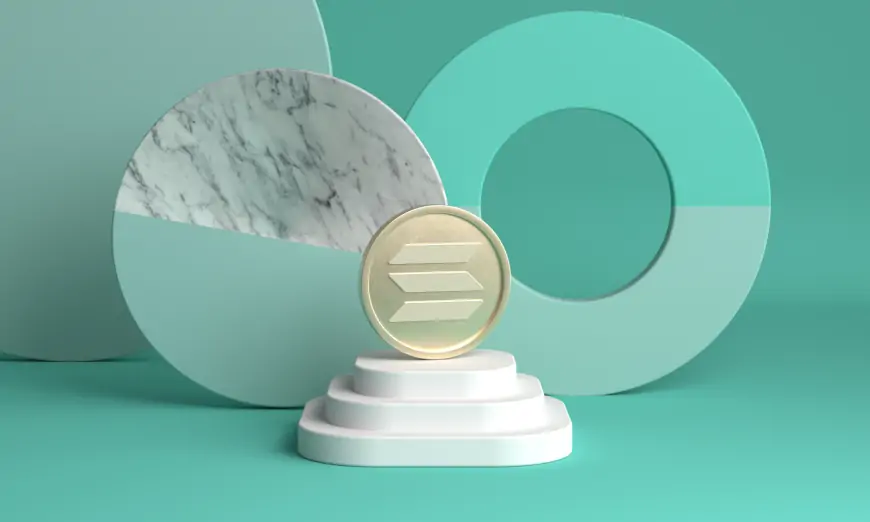What is Solana? A beginner's guide
Solana is a high-performance blockchain platform designed for decentralized applications and crypto innovation.

Understanding Solana (SOL)
Solana, established in 2017, is a blockchain platform tailored for decentralized and scalable applications. Managed by the Solana Foundation in Geneva, it was developed by Solana Labs in San Francisco. Renowned for its rapid transaction processing and minimal fees compared to competitors like Ethereum, Solana's native cryptocurrency, SOL, surged by nearly 12,000% in 2021, peaking with a market capitalization exceeding $75 billion. However, despite its popularity, SOL faced the cryptocurrency market downturn of 2022, plummeting to around $3.63 billion in market cap by December 29, 2022. Yet, within a year, it managed to reclaim nearly half of its lost market value.
The evolution of Solana
Anatoly Yakovenko, co-founder of Solana, drew from his background in distributed systems design at companies like Qualcomm Incorporated. Recognizing the importance of a reliable clock for network synchronization, Yakovenko understood that a synchronized network could achieve significantly faster speeds, limited only by bandwidth. He theorized that implementing proof-of-history could vastly accelerate blockchain processes compared to systems like Bitcoin and Ethereum, which lacked synchronized clocks and struggled to scale beyond 15 transactions per second (TPS). In contrast, centralized systems like Visa handle peaks of up to 65,000 TPS. Proof-of-history, devised by Yakovenko, overcomes this challenge by enabling every network node to rely on recorded time passages.
Concept of proof-of-history
Anatoly Yakovenko introduced the proof-of-history (PoH) concept in a November 2017 white paper. PoH enables blockchain consensus by validating time intervals between events, effectively embedding time passage into the ledger.
In his paper, Yakovenko highlighted that existing blockchains lacked time reliance, with each node operating on its local clock, leading to inconsistencies in message acceptance or rejection based on timestamps. The absence of a standardized clock undermined consensus among network participants.
Technology of Solana
Solana's innovative design employs algorithms to mitigate performance bottlenecks inherent in blockchain software, rendering it scalable, secure, and decentralized. The architecture theoretically supports up to 710,000 transactions per second (TPS) on a standard gigabit network and an astonishing 28.4 million TPS on a 40 gigabit network.
Solana's blockchain operates on a dual consensus model: proof-of-history (PoH) and proof-of-stake (PoS). PoS enables validators to authenticate transactions based on their holdings of coins or tokens, while PoH swiftly timestamps and verifies these transactions.
Expansion of Solana
In 2018, Yakovenko gathered a team to co-found Loom, later rebranded as Solana to avoid confusion with another Ethereum-based project. In June 2018, the project transitioned to cloud-based networks and unveiled a public test net capable of handling bursts of 250,000 TPS a month later.
As of December 12, 2023, Solana had processed over 253 billion transactions, averaging $0.00025 per transaction.
Solana vs. Ethereum
Solana's rapid growth and adaptability have inevitably sparked comparisons with Ethereum, the primary blockchain for decentralized applications (dApps):
Smart contracts: Both Solana and Ethereum support smart contracts, essential for running advanced applications like decentralized finance (DeFi) and non-fungible tokens (NFTs).
Consensus mechanism: Solana and Ethereum employ a proof-of-stake (PoS) consensus model, where validators stake cryptocurrency as collateral to earn rewards for supporting the blockchain. Solana enhances PoS with the addition of proof-of-history (PoH).
Transaction speed: Solana garnered attention in 2021 for surpassing Ethereum in transaction processing speed and cost efficiency. Solana processes over 2,700 transactions per second (as of Dec. 12, 2023) with an average transaction cost of $0.00025. In comparison, Ethereum's transaction throughput is fewer than 15 TPS, with an average transaction fee of approximately $2.62.
Solana's position in the cryptocurrency market
When assessing market capitalization, Solana ranked as the sixth largest cryptocurrency as of December 12, 2023. It stood alongside major competitors such as Bitcoin, Ethereum, Tether, BNB, and XRP.
Availability of SOL tokens in fractional amounts
SOL tokens are divisible into fractional units called lamports, with each lamport representing 0.000000001 SOL. These units are named after Leslie Lamport, a pioneering computer scientist renowned for his contributions to distributed systems.












































